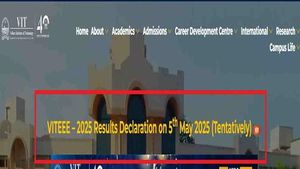In a significant move aimed at enhancing local governance, Ho Chi Minh City is proposing that commune-level authorities be granted the power to recover land and issue land use right certificates, commonly referred to as "red books." This proposal comes from the Department of Natural Resources and Environment (DoNRE) of Ho Chi Minh City, which recently submitted a document to the Department of Justice addressing the necessary adjustments to the organizational structure and powers of local authorities as the city transitions to a two-tier administrative system.
According to the DoNRE, the management of land is a critical area that has raised numerous challenges during the implementation of this new governance model. The department has outlined ten key issues that require review and adjustment in the upcoming 2024 Land Law. These include land use planning, the authority to allocate and lease land, land recovery, public land management, and the resolution of disputes related to land.
One of the central proposals is to transfer the authority to issue red books for the first time to the commune level. This change is intended to streamline procedures and ensure compliance with the new management decentralization. The DoNRE argues that this shift will facilitate the resolution of administrative tasks and improve the efficiency of local governance.
On April 11, 2025, it was reported that a district in Ho Chi Minh City was preparing to recover land from over 2,000 households to construct a new expressway valued at 5,000 billion VND. This project highlights the urgency of the proposed changes, as land recovery is essential for the timely completion of infrastructure developments.
Additionally, the forced land recovery for the implementation of the Hanh Phuc Lake Flower Garden project also took place on the same day, underscoring the need for clear regulations and authority at the local level.
Meanwhile, in Hanoi, the Deputy Director of the Department of Natural Resources and Environment has emphasized that the task of land clearance (GPMB) serves as a litmus test for the capacity of various involved units. The department has been actively collaborating with district-level People's Committees and the Land Development Fund Center to verify land use origins and inspect land records, particularly in areas experiencing disputes or where land does not meet the necessary conditions for granting certificates.
For significant projects like the Ring Road 3.5 and the Tu Lien Bridge construction, legal reviews have been instrumental in classifying eligible subjects for compensation and resettlement. The Tu Lien Bridge project, which connects Tay Ho, Long Bien, and Dong Anh districts, is set to commence on May 19, 2025, with a total investment of 20,171 million VND.
The Hanoi DoNRE has noted that proactive coordination among district-level departments and specialized units is crucial for determining land pricing principles and applying adjustment coefficients effectively. This collaborative effort aims to streamline the land clearance process and ensure fair compensation for affected residents.
Moreover, a multi-sector working group, assigned by the Hanoi People's Committee, has been actively engaged in reviewing mechanisms and policies to advise on specific support policies for land clearance. This group has been involved from the measurement and inventory stages to ensure transparency and fairness in the compensation process.
Despite these efforts, the Deputy Director has identified several shortcomings, including the inadequate updating and exploitation of land management data at the grassroots level. This lack of timely information has led to prolonged dossier appraisal times, thereby affecting the overall progress of land clearance initiatives.
To address these issues, the Deputy Director has proposed enhancing inter-agency and inter-level coordination. This includes clearly defining responsibilities among various departments and maintaining a working group for key projects to ensure a seamless process from appraisal to public communication.
Furthermore, the Deputy Director has suggested incorporating the criterion of "effectiveness of land clearance propaganda coordination" into performance evaluations among different levels of government. This metric would help measure the success of communication strategies in informing and engaging the public.
As part of ongoing reforms, Hanoi has recently adjusted the area of land to be recovered across 39 projects, increasing the total area to 72.60 hectares. This decision reflects the city's commitment to advancing infrastructure while ensuring that affected residents are adequately compensated. On April 29, 2025, it was also reported that the city had agreed to invest in the construction of the Ngoc Hoi Bridge and the connecting roads, further emphasizing the need for efficient land management practices.
In addition to these developments, Hanoi has increased penalties for environmental and land violations, signaling a strict stance on compliance and regulation. This move is part of broader efforts to enhance governance and protect the rights of citizens while facilitating urban development.
As both Ho Chi Minh City and Hanoi navigate the complexities of land management and urban planning, the coordination between local authorities and the community remains pivotal. The proposed changes in governance structures aim not only to streamline administrative processes but also to foster trust and cooperation between citizens and their local governments.
Ultimately, how effectively these proposals are implemented will determine the success of land management reforms and the overall development trajectory of Vietnam’s urban centers.




